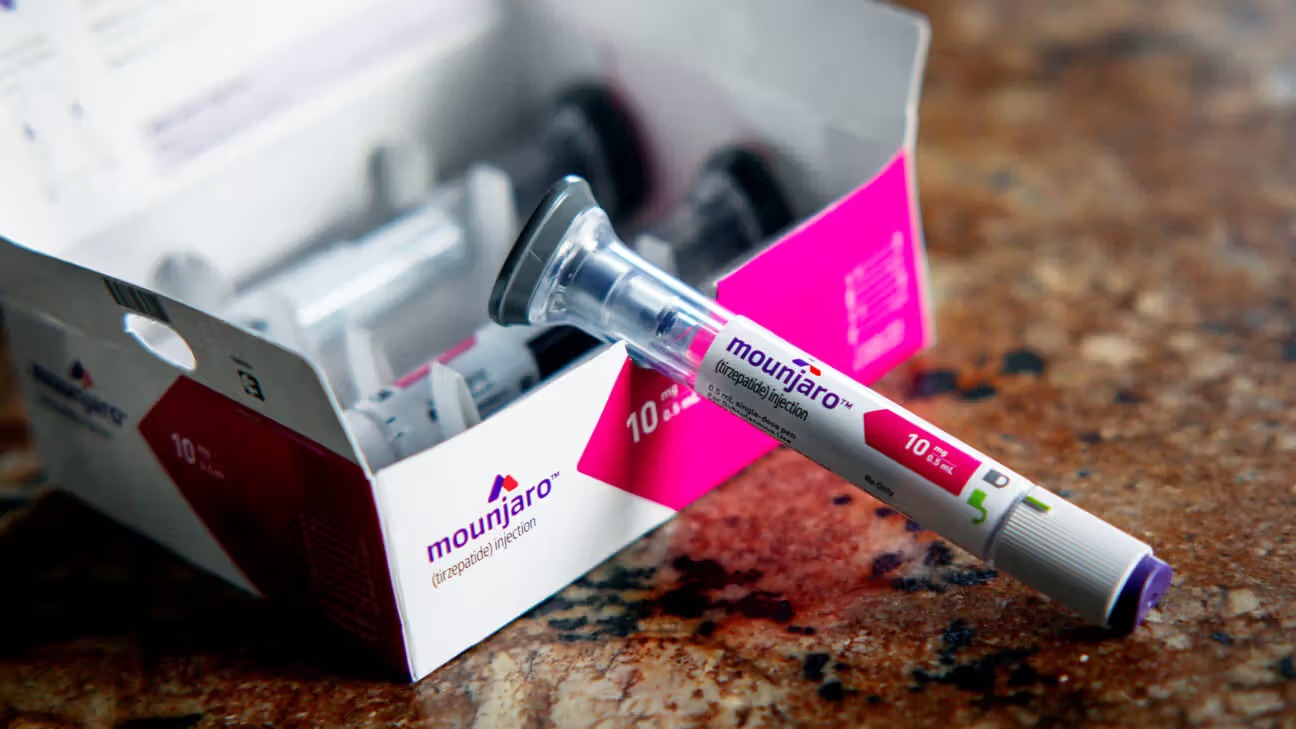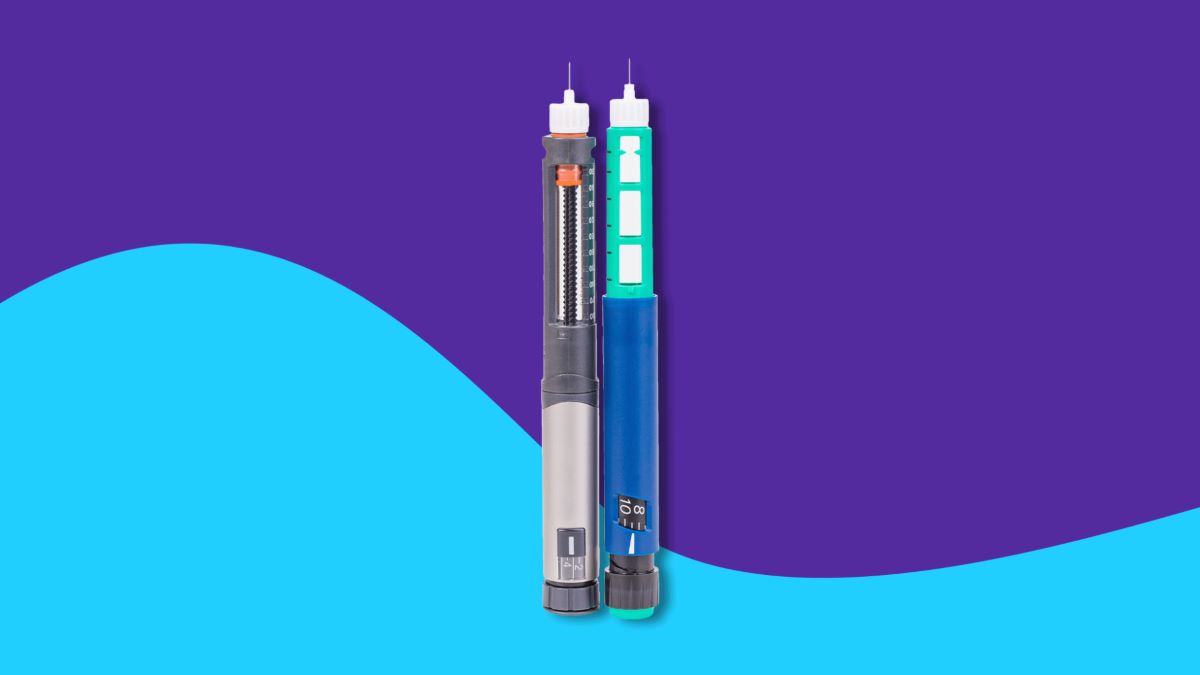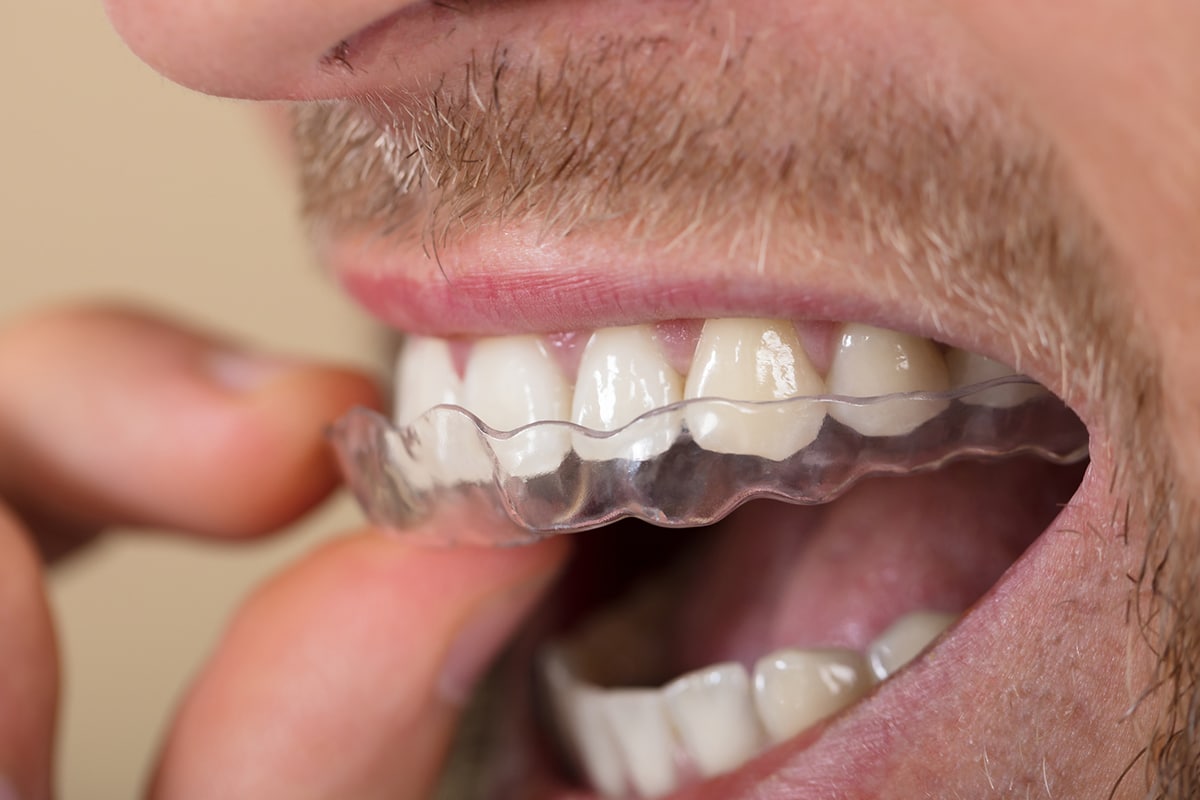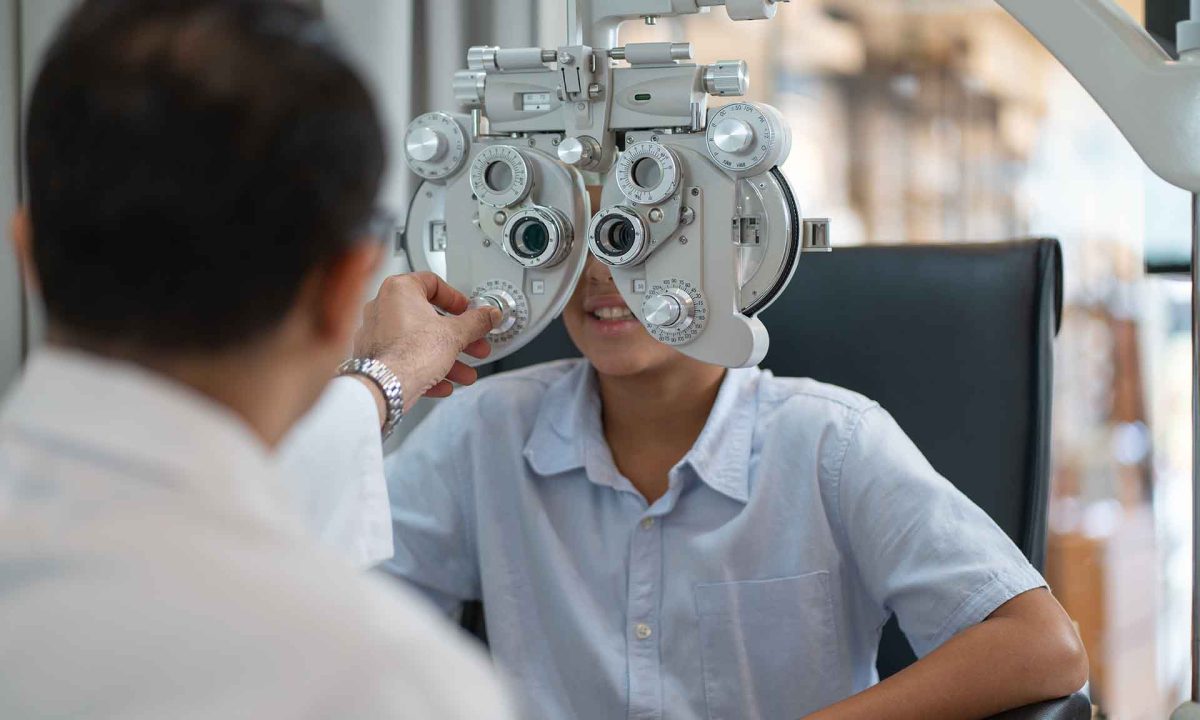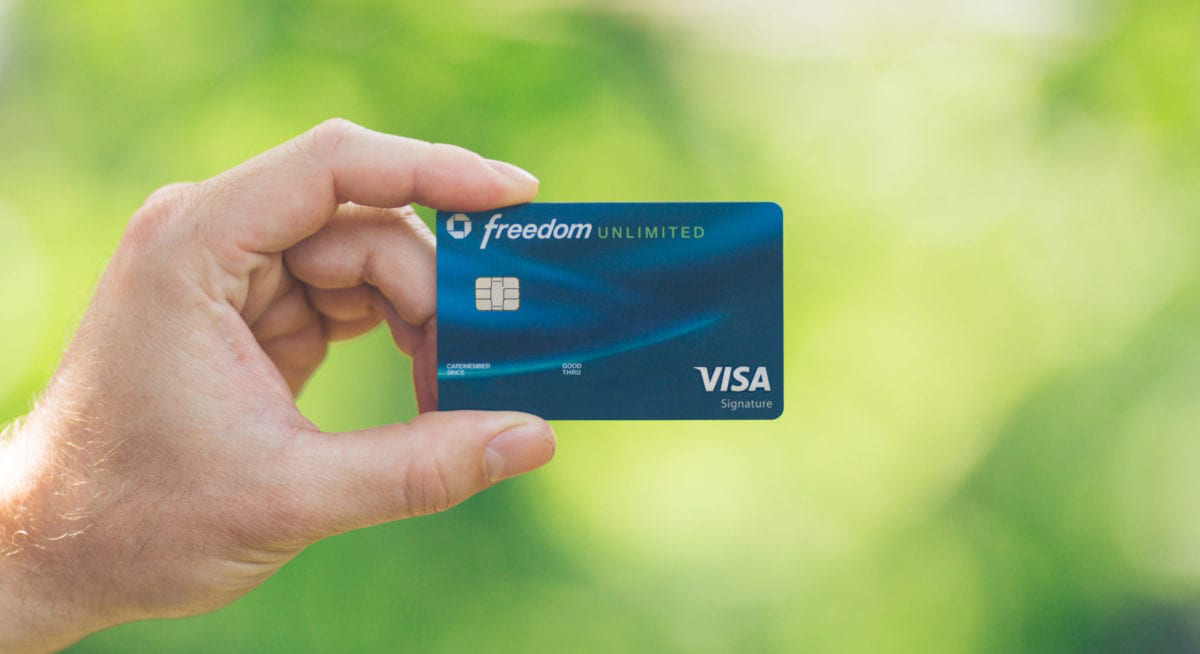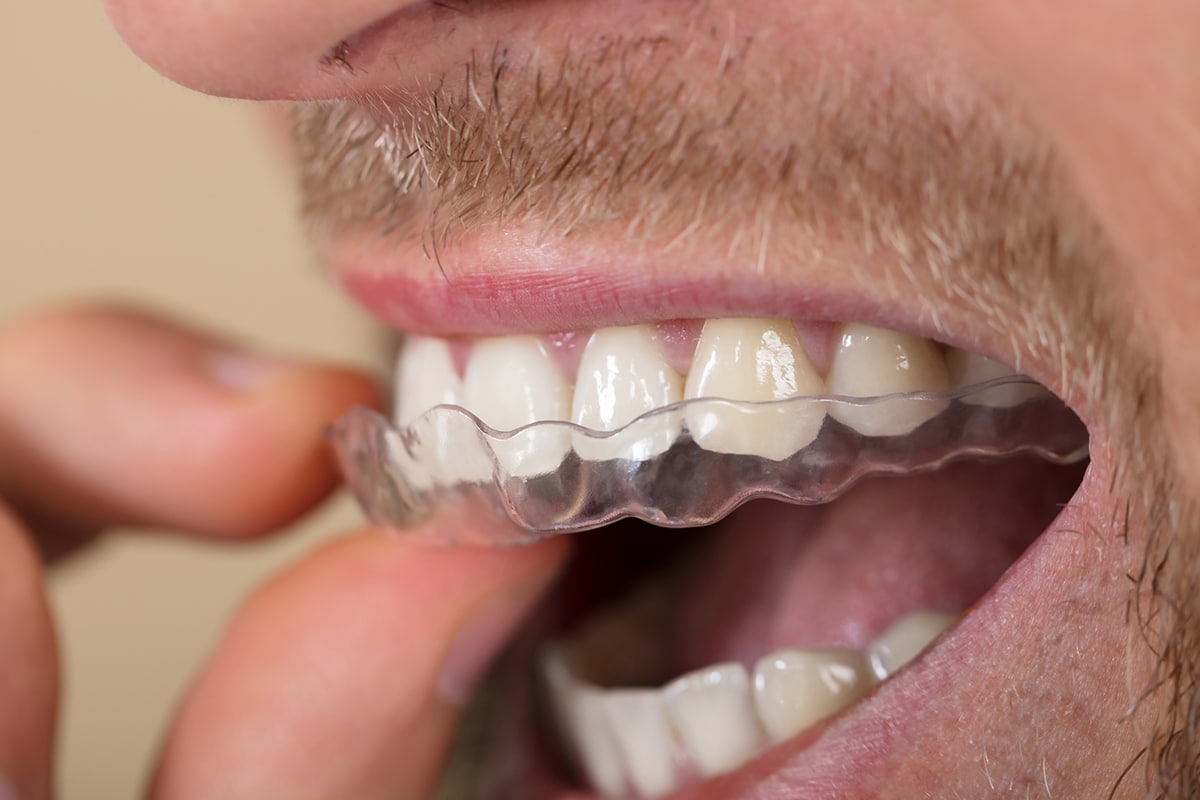

Finance
What Insurance Covers Invisalign?
Modified: December 29, 2023
Learn how insurance can help cover the cost of Invisalign treatment. Discover the financial options available for this popular orthodontic procedure.
(Many of the links in this article redirect to a specific reviewed product. Your purchase of these products through affiliate links helps to generate commission for LiveWell, at no extra cost. Learn more)
Table of Contents
- Introduction
- Understanding Invisalign
- Importance of Dental Insurance
- Types of Dental Insurance
- Does Insurance Cover Invisalign?
- Factors Affecting Insurance Coverage for Invisalign
- PPO Insurance Plans that Cover Invisalign
- HMO Insurance Plans that Cover Invisalign
- Insurance Coverage Limitations for Invisalign
- How to Maximize Invisalign Insurance Coverage
- Alternative Financing Options for Invisalign
- Conclusion
Introduction
Welcome to our comprehensive guide on what insurance covers Invisalign. If you’re considering getting Invisalign treatment to straighten your teeth, understanding the role of dental insurance is crucial.
Invisalign is a popular orthodontic treatment method that uses a series of clear, removable aligners to gradually adjust the position of your teeth. It’s a discreet and convenient alternative to traditional metal braces, making it a sought-after option for people looking to improve their smile.
However, Invisalign treatment can be a significant investment, and many individuals seek financial assistance to make the process more manageable. That’s where dental insurance comes into play.
Dental insurance is designed to help cover the costs associated with various dental procedures, including orthodontic treatments like Invisalign. While dental insurance plans vary in their coverage and limitations, understanding how they work can help you make informed decisions regarding your Invisalign treatment.
Throughout this guide, we will explore the different types of dental insurance, discuss whether insurance covers Invisalign, and highlight the factors that can affect coverage. Additionally, we will provide tips on maximizing your Invisalign insurance coverage and explore alternative financing options.
It is important to note that individual insurance plans can vary in coverage, so it’s always advisable to review the specific details of your plan and consult with your insurance provider to ensure you have accurate information regarding your Invisalign coverage.
Now, let’s dive deeper into the world of Invisalign insurance coverage and explore the options available to you.
Understanding Invisalign
Before delving into insurance coverage for Invisalign, it’s important to have a clear understanding of what Invisalign entails. Invisalign is an orthodontic treatment that offers a discreet, comfortable, and convenient way to straighten teeth.
The treatment consists of a series of custom-made clear aligners that are worn over the teeth. These aligners are virtually invisible, making them an attractive option for individuals who wish to straighten their teeth without the noticeable appearance of traditional braces.
Unlike traditional braces, Invisalign aligners are removable, allowing for easy cleaning and maintenance of oral hygiene. This feature also means that there are no dietary restrictions, as the aligners can be removed when eating or drinking.
Invisalign treatment typically involves a series of aligners that are changed every few weeks, gradually moving the teeth into their desired positions. Each aligner is custom-made to fit the patient’s teeth and is designed to exert gentle yet effective forces to achieve the desired dental alignment.
During the Invisalign treatment process, patients will need to visit their dentist or orthodontist periodically to ensure that the treatment is progressing as planned. Typically, these visits occur every 4-6 weeks, allowing the dentist to monitor the progress and make any necessary adjustments along the way.
The duration of treatment with Invisalign can vary depending on the complexity of the case and the desired results. However, on average, Invisalign treatment lasts between 12 to 18 months. It’s important to follow the treatment plan diligently and wear the aligners as instructed to achieve optimal results.
Overall, Invisalign offers a convenient and discreet alternative to traditional braces, allowing individuals to achieve a straighter smile without the appearance of metal brackets and wires. Now, let’s dive into the role of dental insurance in helping to cover the costs associated with Invisalign treatment.
Importance of Dental Insurance
Dental insurance plays a significant role in helping individuals manage the costs of their oral healthcare needs. As dental procedures, including orthodontic treatments like Invisalign, can be expensive, having dental insurance can provide financial support and peace of mind.
One of the primary benefits of dental insurance is that it helps offset the cost of preventive care, such as routine cleanings, exams, and X-rays. Keeping up with regular dental appointments can help prevent the development of more serious oral health issues that may require costly treatments down the line.
When it comes to orthodontic procedures like Invisalign, dental insurance can help alleviate the financial burden. While not all insurance plans cover orthodontic treatment, those that do may offer coverage for a portion of the cost, making the investment more affordable.
Moreover, dental insurance often includes coverage for other dental services, such as fillings, extractions, and root canals. This coverage can significantly reduce the out-of-pocket expenses associated with these procedures.
Having dental insurance also encourages individuals to seek regular dental care. Knowing that they have coverage can make people more inclined to schedule routine check-ups and address any dental issues promptly, preventing them from worsening or becoming more costly to treat.
Additionally, dental insurance plans often have a network of preferred providers, offering reduced fees for services. This network can help individuals access quality dental care at more affordable rates, further maximizing the benefits of their insurance coverage.
While dental insurance plans may have limitations and waiting periods for certain procedures, they still offer valuable financial protection and promote good oral health practices. It’s essential to review the details of your dental insurance plan to understand its coverage and limitations accurately.
Next, let’s explore the different types of dental insurance and discuss whether they cover Invisalign treatment.
Types of Dental Insurance
When it comes to dental insurance, there are generally two main types of plans: Preferred Provider Organization (PPO) plans and Health Maintenance Organization (HMO) plans. Understanding the differences between these two types can help you determine which one may be more suitable for your needs and Invisalign coverage.
Preferred Provider Organization (PPO) Plans:
PPO plans allow you to choose from a network of dentists and specialists who have agreed to provide services at discounted rates to plan members. While you can still receive care from dentists outside of the network, the benefits and coverage are often higher when using in-network providers.
PPO plans typically offer more flexibility and choice when it comes to selecting a dentist or orthodontist for Invisalign treatment. These plans may provide coverage for a portion of the Invisalign treatment cost, making it more affordable for patients.
It’s important to note that with PPO plans, there may still be some out-of-pocket expenses and annual maximums to consider. However, the flexibility and potential coverage for Invisalign make PPO plans an attractive option for many individuals.
Health Maintenance Organization (HMO) Plans:
HMO plans operate under a network-based model, where members are required to choose a primary care dentist from the network. Referrals may be necessary to see specialists, including orthodontists for Invisalign treatment.
HMO plans typically have lower monthly premiums compared to PPO plans but may have more limited coverage for orthodontic procedures like Invisalign. However, coverage can vary depending on the specific plan, so it’s crucial to review the details carefully.
While HMO plans may offer reduced coverage for Invisalign, they can still provide some financial assistance, making treatment more affordable. It’s advisable to check with your insurance provider to understand the extent of coverage for orthodontic procedures like Invisalign under your HMO plan.
It’s important to remember that these are general guidelines, and dental insurance plans can vary in their coverage and limitations. It’s always best to review the specifics of your plan and consult with your insurance provider to understand the coverage options for Invisalign treatment.
Now that we’ve explored the types of dental insurance plans, let’s investigate whether insurance typically covers Invisalign treatment.
Does Insurance Cover Invisalign?
Whether or not insurance covers Invisalign treatment is a common concern for individuals considering this orthodontic option. The coverage for Invisalign can vary depending on your dental insurance plan.
While many dental insurance plans include coverage for orthodontic treatment, such as traditional braces, not all plans cover Invisalign specifically. It’s important to review the specifics of your plan to determine if Invisalign is covered.
If your dental insurance plan does cover Invisalign, it will typically provide a percentage of the treatment cost. The coverage percentage can vary, but it is common for insurance to cover around 50% of the cost of orthodontic treatment, including Invisalign.
However, it’s important to note that insurance coverage for Invisalign may have limitations, including age restrictions and specific criteria that must be met for coverage to apply. For instance, some plans may only cover Invisalign for individuals under a certain age or in cases where the treatment is considered medically necessary.
It’s essential to check the details of your insurance plan or speak with your insurance provider to understand the specific coverage for Invisalign. They will be able to provide you with the most accurate information regarding what is covered, any limitations or restrictions, and the estimated out-of-pocket costs you may incur.
If your current dental insurance plan does not offer coverage for Invisalign, it doesn’t mean you won’t be able to pursue the treatment. There are alternative financing options available that can help make Invisalign more affordable. We will explore these options in more detail later in this guide.
Remember, each dental insurance plan is unique, so it’s crucial to thoroughly review your plan’s coverage details and consult with your insurance provider to understand the extent of coverage for Invisalign.
Now that we’ve discussed the coverage aspect, let’s explore the factors that can affect insurance coverage for Invisalign.
Factors Affecting Insurance Coverage for Invisalign
Several factors can influence insurance coverage for Invisalign treatment. It’s essential to understand these factors to determine if and to what extent your dental insurance plan will cover the cost of Invisalign.
Plan Coverage: The first and most crucial factor is your dental insurance plan’s coverage. Each plan has its own set of rules, limitations, and guidelines for orthodontic treatment. Some plans may cover Invisalign fully or partially, while others may not provide coverage at all. Review your plan’s orthodontic coverage details to understand if Invisalign is included.
Age Restrictions: Some insurance plans may have age restrictions for orthodontic treatment, including Invisalign. They may only provide coverage for individuals within a certain age range, typically children or adolescents. Adults may have more limited coverage options for Invisalign treatment.
Medical Necessity: Insurance coverage for Invisalign may also depend on the perceived medical necessity. Some dental insurance plans only cover orthodontic treatment if it is deemed medically necessary to correct bite issues, speech problems, or severe misalignments. Cosmetic concerns alone may not qualify for coverage.
Prior Authorization: Insurance plans may require prior authorization before approving coverage for Invisalign treatment. This means that you will need to provide documentation, including X-rays, dental records, and treatment plans, to demonstrate the need for orthodontic treatment and receive approval before starting Invisalign.
Waiting Periods: Some dental insurance plans have waiting periods for orthodontic benefits, including Invisalign. This means that you may need to wait a certain amount of time after enrolling in the plan before becoming eligible for coverage. Be sure to check your plan’s waiting period details.
Annual Maximums: Dental insurance plans often have an annual maximum, which is the maximum amount they will pay out for covered services per year. Orthodontic treatment, including Invisalign, may be subject to this annual maximum. If the cost of Invisalign exceeds the maximum coverage amount, you may be responsible for the remaining expenses.
It’s important to thoroughly review the details of your dental insurance plan and consult with your insurance provider to understand how these factors impact your coverage for Invisalign. They can provide you with specific information about your plan’s coverage, limitations, and any additional requirements or documentation needed.
Now that we’ve covered the factors affecting insurance coverage, let’s explore PPO insurance plans that typically cover Invisalign.
PPO Insurance Plans that Cover Invisalign
Preferred Provider Organization (PPO) insurance plans are known for providing more flexibility and choice when it comes to selecting a dentist or orthodontist for Invisalign treatment. Many PPO plans offer coverage for orthodontic treatment, including Invisalign.
PPO plans often have a network of dentists and orthodontists who have agreed to provide services at discounted rates to plan members. While you can still receive care from providers outside of the network, the benefits and coverage are typically higher when using in-network providers.
When it comes to Invisalign coverage, PPO plans may cover a percentage of the treatment cost, typically ranging from 50% to 80%, depending on the plan. This helps make Invisalign more affordable for patients who have PPO insurance.
It’s important to note that even with coverage, there may still be out-of-pocket expenses for deductibles, copayments, or any costs exceeding the plan’s coverage limits. The specific details of coverage and any limitations will vary based on the PPO insurance plan.
If you have a PPO insurance plan and are considering Invisalign treatment, it’s crucial to verify your plan’s coverage details. Contact your insurance provider or review the plan documents to understand the percentage of coverage, any restrictions or criteria for eligibility, and the estimated out-of-pocket expenses you may incur.
Furthermore, it’s recommended to consult with your dentist or orthodontist who offers Invisalign treatment. They can help navigate the insurance process, provide cost estimates, and assist you in maximizing your insurance benefits to make Invisalign treatment more affordable.
Now that we’ve discussed PPO insurance plans, let’s explore HMO insurance plans and their coverage for Invisalign treatment.
HMO Insurance Plans that Cover Invisalign
Health Maintenance Organization (HMO) insurance plans operate under a network-based model, requiring individuals to choose a primary care dentist from the network. While HMO plans typically have lower monthly premiums compared to PPO plans, their coverage for orthodontic procedures like Invisalign may be more limited.
While HMO plans may not provide as extensive coverage for Invisalign as PPO plans, some HMO plans may still offer partial coverage. The extent of coverage can vary depending on the specific plan and the individual’s unique circumstances.
It’s important to note that HMO plans generally require a referral from your primary care dentist to see a specialist, including an orthodontist for Invisalign. The orthodontist will evaluate your case and determine if Invisalign is necessary or if alternative treatment options should be considered.
If your primary care dentist determines that you are a suitable candidate for Invisalign and refers you to an orthodontist within the HMO network, there may be coverage available for a portion of the treatment cost. However, it is essential to review the specific details of your HMO plan, including any limitations, age restrictions, and coverage percentages.
While HMO plans may present more limited coverage options for Invisalign, it’s worth exploring and discussing the possibilities with your insurance provider and orthodontist. They can provide accurate information regarding the coverage available under your specific HMO plan and assist you in understanding the potential costs associated with Invisalign treatment.
Additionally, if your HMO plan does not provide coverage for Invisalign, there are alternative financing options that we will explore later in this guide to make Invisalign treatment more affordable and accessible.
Now that we’ve discussed both PPO and HMO insurance plans, let’s explore the limitations and considerations regarding insurance coverage for Invisalign.
Insurance Coverage Limitations for Invisalign
While dental insurance plans may offer coverage for Invisalign treatment, it’s important to be aware of the limitations and considerations that can affect the extent of coverage. Understanding these limitations can help you make informed decisions regarding your orthodontic treatment and manage your financial expectations.
Age Restrictions: Some dental insurance plans may have age restrictions for orthodontic coverage, including Invisalign. They may only provide coverage for individuals within a certain age range, typically children or adolescents. Adults may face more limited coverage options for Invisalign treatment.
Medically Necessary Criteria: Invisalign coverage may be contingent upon meeting specific medical necessity criteria. Insurance plans may require evidence that the treatment is necessary to correct functional issues, such as bite problems or speech impairments. Cosmetic concerns alone may not qualify for coverage.
Plan Exclusions: Insurance plans may have exclusions on certain orthodontic treatments, including Invisalign. These exclusions can vary and may impact the coverage available for your treatment. Reviewing your plan documents or consulting with your insurance provider can help understand if Invisalign is specifically excluded.
Waiting Periods: Some dental insurance plans have waiting periods for orthodontic benefits, including Invisalign. These waiting periods can range from a few months to a year or more. It’s essential to review your plan’s waiting period details to determine when you become eligible for coverage.
Coverage Maximums: Dental insurance plans often have annual maximums, which are the maximum amounts they will pay out for covered services in a year. Orthodontic treatment, including Invisalign, may be subject to these maximums. If the cost of Invisalign exceeds the annual maximum, you may be responsible for the remaining costs.
Documentation and Prior Authorization: Insurance plans may require documentation and prior authorization before approving coverage for Invisalign treatment. This includes submitting X-rays, dental records, treatment plans, and meeting any other specific requirements outlined by your insurance provider.
It’s crucial to review the details of your dental insurance plan to understand the specific coverage limitations and criteria for Invisalign. Consulting with your insurance provider can help clarify any questions or concerns you may have regarding coverage.
Keep in mind that even with insurance coverage, there may still be out-of-pocket expenses. These can include deductibles, copayments, or any costs exceeding the plan’s coverage limits. Being aware of these limitations and potential costs can help you plan and manage your budget for Invisalign treatment.
Now that we’ve explored the limitations of insurance coverage for Invisalign, let’s discover how to maximize your insurance benefits for this orthodontic treatment.
How to Maximize Invisalign Insurance Coverage
Maximizing your Invisalign insurance coverage can help make the treatment more affordable and minimize out-of-pocket expenses. Here are some tips to make the most of your insurance benefits:
1. Review your dental insurance plan: Carefully review your dental insurance plan’s coverage details, limitations, and requirements. Understand the percentage of coverage for orthodontic treatments like Invisalign and any specific criteria that must be met for coverage to apply.
2. Consult your dentist or orthodontist: Discuss your insurance coverage with your dentist or orthodontist who offers Invisalign. They can provide cost estimates, help navigate the insurance process, and guide you in understanding the coverage available under your particular plan.
3. Confirm network providers: If you have a PPO insurance plan, determine which dentists or orthodontists are in-network providers for your insurance plan. Using in-network providers can offer better coverage and reduce your out-of-pocket expenses for Invisalign treatment.
4. Get prior authorization: Before starting your Invisalign treatment, check if your insurance plan requires prior authorization. Provide all necessary documentation, including X-rays, dental records, and treatment plans, to obtain approval and ensure that coverage applies to your treatment.
5. Understand waiting periods: Be aware of any waiting periods specified in your dental insurance plan. Timing your Invisalign treatment initiation accordingly can help you make the most of your coverage and reduce any delay in starting treatment.
6. Monitor your annual maximum: Understand your plan’s annual maximum, which is the maximum amount your insurance plan will pay for covered services in a year. Confirm if there are any separate maximums for orthodontic treatment. Monitoring your annual maximum can help you plan your treatment and manage any potential cost overruns.
7. Explore flexible spending accounts (FSAs) or health savings accounts (HSAs): If available through your employer, consider using FSAs or HSAs to pay for Invisalign treatment. These accounts allow you to set aside pre-tax dollars for eligible healthcare expenses, reducing your overall out-of-pocket costs.
8. Inquire about payment plans: If your insurance coverage does not fully cover your Invisalign treatment or you don’t have insurance, inquire about payment plans offered by your dental provider. Many dental offices offer flexible financing options to make the cost of Invisalign more manageable.
Remember, every dental insurance plan is unique, so it’s important to review your plan’s specific details and consult with your provider to fully understand your coverage for Invisalign. By leveraging your insurance benefits and exploring alternative financing options, you can maximize the value of your coverage and make Invisalign a more affordable treatment option.
Now, let’s explore alternative financing options for Invisalign for those without insurance or with limited coverage.
Alternative Financing Options for Invisalign
If you don’t have dental insurance coverage for Invisalign or if your coverage is limited, there are alternative financing options available to help make the treatment more affordable. Here are some options to consider:
1. Monthly Payment Plans: Many dental offices offer monthly payment plans specifically designed for orthodontic treatments like Invisalign. These plans allow you to spread the cost of treatment over time, making it more manageable by dividing it into smaller monthly payments.
2. Dental Financing Companies: There are specialized dental financing companies that provide loans specifically for dental treatments, including Invisalign. These companies offer flexible repayment options and competitive interest rates, allowing you to pay for your treatment over time.
3. Health Savings Accounts (HSAs) or Flexible Spending Accounts (FSAs): If you have an HSA or FSA, you can use the funds in these accounts to cover the cost of Invisalign treatment. These accounts allow you to set aside pre-tax dollars for eligible medical and dental expenses, reducing your overall out-of-pocket costs.
4. Credit Cards: You can consider using a credit card with a promotional 0% interest rate or a low-interest rate to finance your Invisalign treatment. Make sure to compare credit card terms and conditions to find the most suitable option for your financial situation.
5. Customized Financing Options: Some dental providers offer customized financing options tailored to their patients’ needs. Speak with your dentist or orthodontist about any potential in-house financing plans they may offer to help make Invisalign more affordable for you.
6. Employer Assistance or Health Reimbursement Arrangements (HRAs): Inquire with your employer if they provide any assistance or reimbursement programs for dental treatments like Invisalign. Some employers offer health reimbursement arrangements that can be used to cover a portion of the treatment cost.
7. Orthodontic Scholarships or Grants: There are charitable organizations and orthodontic associations that offer scholarships or grants for individuals seeking orthodontic treatment. Research and explore these opportunities to see if you qualify for any financial assistance.
It’s important to carefully evaluate and compare the terms and conditions of each financing option to ensure it aligns with your financial goals and capabilities. Consider factors such as interest rates, repayment terms, and any associated fees to make an informed decision.
Discussing your financing options with your dental provider can also provide valuable insights and guidance in choosing the best financing option for your specific circumstances.
By exploring these alternative financing options, you can make Invisalign treatment more accessible and manageable, even if you don’t have comprehensive dental insurance coverage.
Now, let’s conclude our guide on what insurance covers Invisalign and summarize the key points discussed.
Conclusion
Understanding what insurance covers Invisalign is crucial when considering this popular orthodontic treatment. Dental insurance plays a significant role in making Invisalign more affordable by providing coverage for a portion of the treatment cost. However, coverage varies depending on your specific dental insurance plan.
Preferred Provider Organization (PPO) plans generally offer more flexibility in choosing dentists or orthodontists and often provide coverage for Invisalign. Health Maintenance Organization (HMO) plans may also offer partial coverage for Invisalign, although they may have more restrictions and limitations.
Factors such as age restrictions, medical necessity, waiting periods, coverage maximums, and prior authorization can affect the extent of insurance coverage for Invisalign. It’s essential to review your plan’s details, consult with your insurance provider, and discuss the treatment with your dentist or orthodontist to fully understand your coverage.
If your dental insurance does not provide coverage for Invisalign or if your coverage is limited, alternative financing options can help. Monthly payment plans, dental financing companies, HSAs/FSAs, credit cards, customized financing options, employer assistance, and orthodontic scholarships/grants are options to explore to make Invisalign more affordable.
Maximizing your insurance coverage and utilizing alternative financing options can help you achieve your dream of straighter teeth with Invisalign. It’s important to weigh the costs and benefits of each option and choose the one that best fits your financial situation and goals.
Remember, each individual’s insurance coverage and financial circumstances are unique. It’s advisable to seek personalized advice from your dentist, orthodontist, and insurance provider to determine the specific options and resources available to you.
Now that you have a better understanding of what insurance covers Invisalign and the alternative financing options, you can proceed with confidence in your decision-making process. Take the first step towards a straighter smile and consult with professionals to determine the best path for your Invisalign journey.
